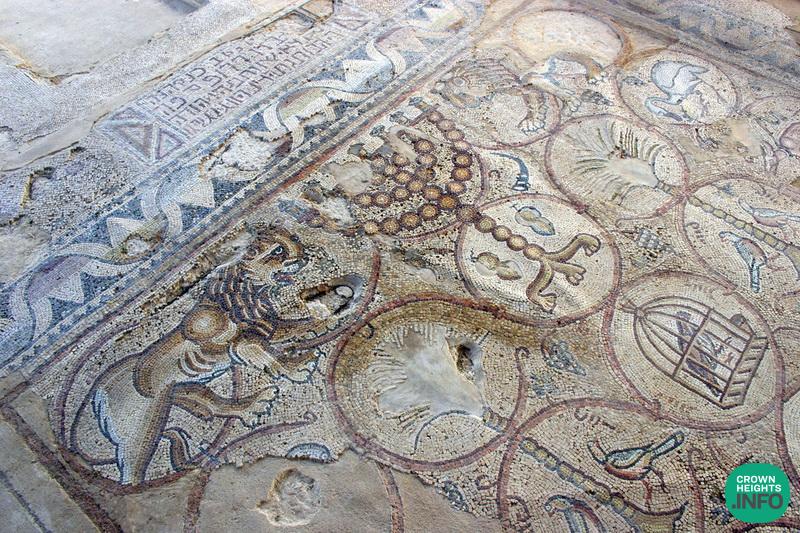
A Mosaic, Originally Discovered in 1957, Shows The Menorah, A Shofar, and A Lulav and Esrog
Way back in 1957, David Chen, an Israel Defense Forces paratrooper on active duty, just could not believe his eyes. Whilst on a nocturnal walk near Nir Oz, a kibbutz in the Gaza Envelope, right below his feet, a spectacular colorful mosaic gazed at him from the ground. At this point, David did not realize what an amazing piece of history was buried there. “The first thing I saw was a whole menorah,” David recalls, “I was very excited to suddenly just come across such a meaningful find; the whole army company was also excited.”
“In effect, the whole story happened by chance. I was a soldier in the Paratrooper’s Brigade, and we used to do stakeout surveillance activities every night in this area, exactly where the war is waging today. I was fascinated by archaeology since I was a school kid, and I used to get up earlier than the other soldiers and take a walk in the fields, looking for ancient pottery sherds. One day, a new road was being dug to Kibbutz Nir Oz, and I followed the tracks of the mechanical diggers along the new route, when I suddenly saw some mosaic stones. I looked to the side, and I saw that it was an entire mosaic floor! I went up to the tractors and asked the drivers to continue working at another spot, until it became clear what it was all about. Luckily, they agreed. I went back to the army base and told my Company Commander, who was none other than Raphael ‘Raful’ Eitan, a military officer who himself had an affinity for archaeology, so I got three days off. We called the Department of Antiquities in Jerusalem and told them about the exciting discovery, and that’s how the excavation began. We worked together with the professional archaeologists to expose the mosaic floor.”
The mosaic floor of the Ma‘on-Nirim synagogue depicts intertwining vine branches emerging from an amphora jar and forming 55 decorative medallions enclosing various vessels and symbols, including the agricultural produce of the land and various animals. At the top of the mosaic, there is a magnificent seven-branched menorah standing on three legs shaped like the paws of a lion; next to which are etrog fruit, a shofar, and a lulav, and on each side of the menorah are palm trees and lions, symbols of the Royal House of Judah.
The mosaic incorporates an Aramaic inscription: its upper part is a blessing to the entire community, and its continuation is dedicated to the three people who apparently contributed to the construction of the mosaic.
In the excavation, various artifacts were discovered in front of the Torah Ark niche on the synagogue floor, including coins, animal bones, pottery sherds and glass candle fragments, as well as metal objects that probably belonged to the Torah ark and its curtain. In addition, twenty amulets were found, among them some belonging to women seeking good health.
The discovery of this mosaic, depicting the symbols of the menorah, shofars, and lion decorations, constituted for the young State of Israel in its formative years, another reminder of the ‘ancestral right’ and the idea of the continuity of the Jewish people in the Land of Israel. As such, replicas of the lions and the menorah from the Negev synagogue were made by artist Naomi Henrik, to be displayed in the entrance hall of the simple wooden house of Yitzhak Ben-Zvi, Israel’s second president, in Jerusalem. Henrik’s artistic work can be viewed today in the Kuzari Garden in the Rehavia neighborhood.
After the exposure of the synagogue, the floor’s condition deteriorated, and in 2006, the mosaic was removed from its site and conserved in the Israel Antiquities Authority laboratories. In a joint project with the Jewish National Fund and the Eshkol Regional Council, it was subsequently returned to its original location.
David records his visit to the renovated mosaic with his grandson: “When he reached the age of military service, we came back to the original location, and I proudly showed him the mosaic, and it was a very meaningful experience,” he shared.
We hope and pray that better days will soon be with us, and people will be able to visit the mosaic and be impressed by its beauty, as the site is accessible to the public.
Share this amazing find with your friends!
The mosaic of Ma‘on-Nirim, photo by Emil Aladjem, Israel Antiquities Authority.
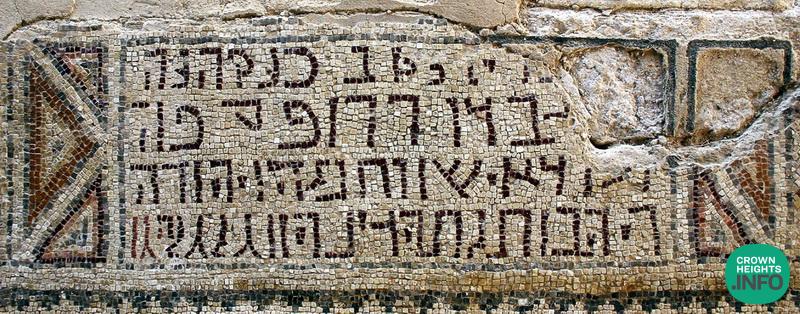
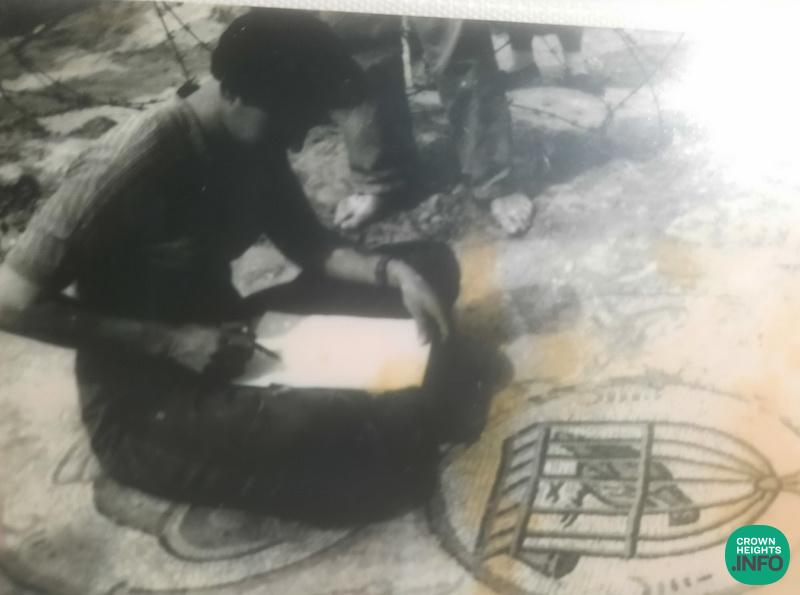

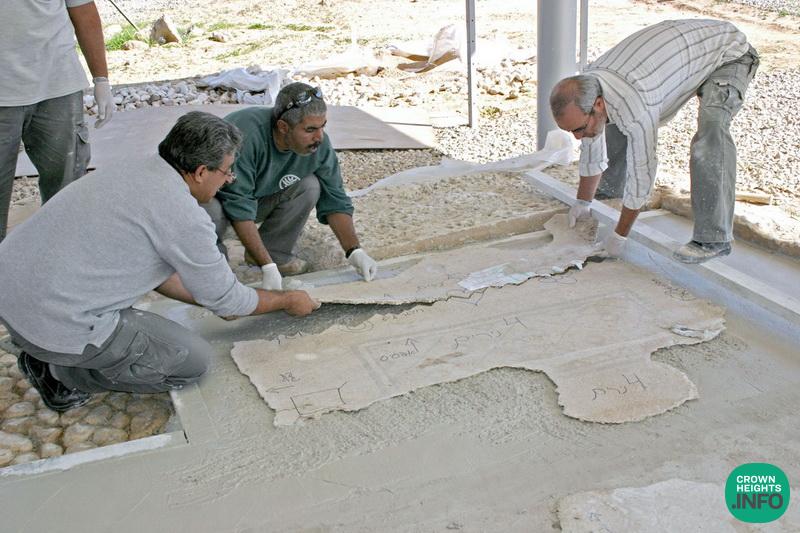
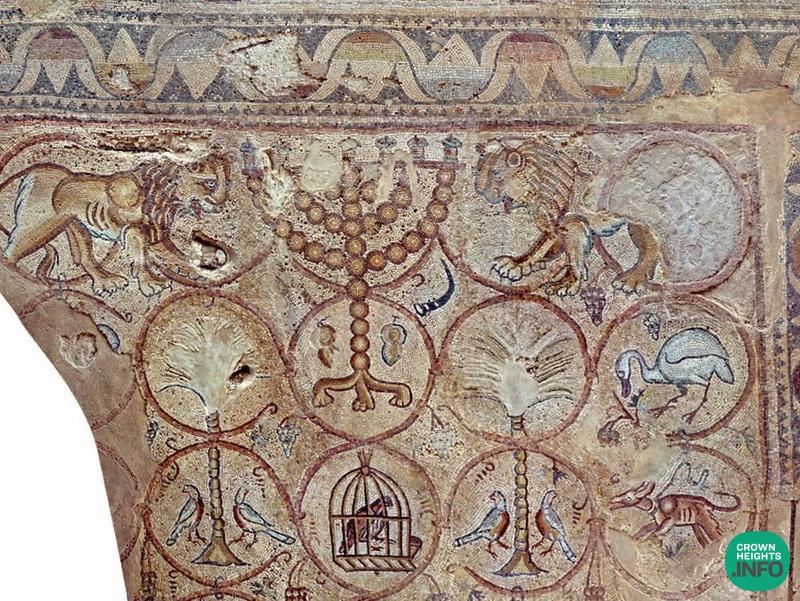















How old?
Any idea what era this is from?
Arieh Freeman
6th-century